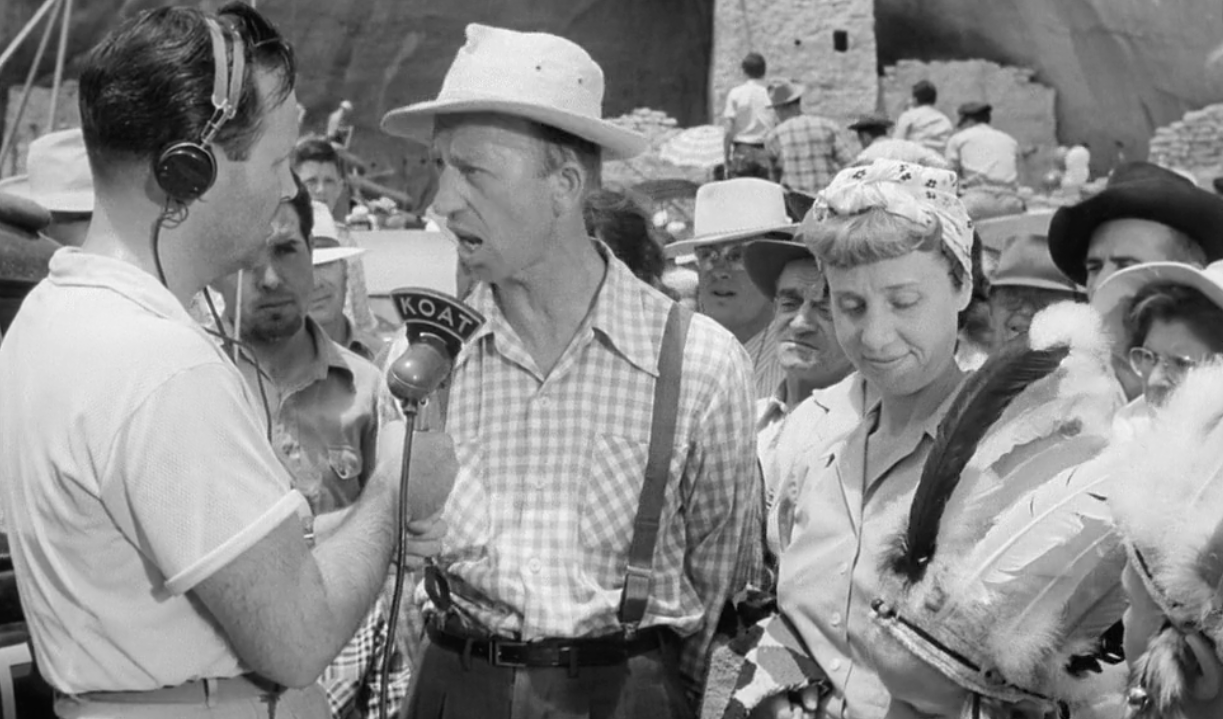What is illustrated by the Federber family in “Ace in the Hole”?
Ace in the Hole (1951), Billy Wilder’s caustic film about a calculating newspaper man, miscalculated the way audiences would respond to a scathing examination of journalistic practice and popular media consumerism. The film follows Chuck Tatum (Kirk Douglas), a commanding and talented writer who has lost 11 jobs in major cities across America thanks to his lack of self-control, resulting in a dead-end job with a small Albuquerque paper that functions under the modus operandi of “Tell the truth.” When Chuck stumbles across a scene tucked behind a withering Indian shop in which a man named Leo Minosa (Richard Benedict) is stuck in a collapsed cave, he sees the chance to escape Albuquerque on the wings of a media frenzy. In short order, he has won favor with the local sheriff, written sensationalized copy that is drawing crowds by the thousands thanks to buzz words (“Ancient Curse Entombs Man”) and playing the human interest angle, and transforms the area into a mess of consumerism and self-service that earned the film its second and even less-popular title, The Big Carnival.
Al and Nellie Federber (Frank Cady and Geraldine Hall, respectively) are the first “tourists” who show up at the cave site following Tatum’s first bit of newspaper coverage. They were heading out for a vacation and stopped to get in on the scoop. They also convince Tatum (who has since discovered Leo’s wife Lorraine (Jan Sterling) wants to skip town) that what he’s doing is going to work, and a spectacle is being born.
“You saw those people,” Chuck tells Lorraine. “To you, they’re a couple of squares. To me, they’re just the beginning. To me, they’re Mr. and Mrs. America. I wasn’t sure before, but now I know they’re going to go for it. They’ll eat it up, the story and the hamburgers. You’ll sell all your hamburgers, hot dogs, soda pop, and all your Navajo rugs. There’s going to be real dough in that cash register by tonight.

In Wilder’s vision, the Federbers are just that: two everyday Americans who can’t resist the pull of a sensational story. They are the people at the grocery store, at the bank, at the car wash. They are anyone and everyone.
They are also a big part of why Ace in the Hole failed as a picture in 1951—Wilder essentially accused his entire audience of being lecherous creeps who aren’t above the schadenfreude of capitalizing on someone else’s sorrow. Waves of business owners show up to sell hot dogs, hold carnivals, sell balloons, and watch the dig. People were congregating and people have needs, which means hungry capitalists were there to fill demand. Tatum kept Leo’s wife around under the piles of money her once-empty shop was pulling in selling hamburgers and soda. Wilder tells us that people can dress the spectacle up however they will, with proceeds being donated to good causes or with positive intentions spread around, the thousands who eventually gathered outside Leo’s cave, initiated by the Federbers, are part of a freak show of human nature. Even good old Frank Federber tries to use a radio interview to peddle his own life insurance, as no man is above opportunity.
Chuck Tatum is not an admirable guy, but in Wilder’s eyes, he hasn’t done worse than the hordes of people who came to serve their own needs on the back of Leo’s situation. Chuck built the entire story and media sensation to win back his job in New York, but every predatory businessman who showed up on site did the exact same within his own context. When the everyday American is being paralleled against an obvious curmudgeon of human decency, it says something about Wilder’s perception of people and the larger corrosive impact of sensationalized journalism on society.

